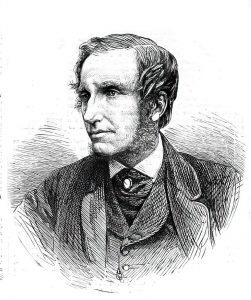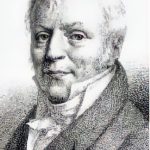
Movement(s): –
Edward William Cooke (1811 – 1880) was an English landscape and marine painter, and gardener. Cooke was born in London, the son of well-known line engraver George Cooke; his uncle, William Bernard Cooke (1778–1855), was also a line engraver of note, and Edward was raised in the company of artists (like Thomas Boys who was an apprentice of his father).
He was a precocious draughtsman and a skilled engraver from an early age, displayed an equal preference for marine subjects (in special in sailing ships) and published his “Shipping and Craft” – a series of accomplished engravings – when he was 18, in 1829.
He went on to travel and paint with great industry at home and abroad, indulging his love of the 17th-century Dutch marine artists with a visit to the Netherlands in 1837. He returned regularly over the next 23 years, studying the effects of the coastal landscape and light, as well as the works of the country’s Old Masters, resulting in highly successful paintings.
He went on to travel in Scandinavia, Spain, North Africa and, above all, to Venice. He also travelled extensively in Normandy.
Click here to read Cooke’s full bio on Wikipedia.
He painted several other places in France (a link “⇠” will be made to his works in those cities below when they are put online):
- Hauts-de-France
- Abbeville
- Calais
- Normandy
- Dieppe ⇠
- Fecamp ⇠
- Honfleur ⇠
- Le Havre ⇠
- Le Treport
- Mont Saint-Michel
- Trouville-sur-Mer
- Provence-Alpes-Cote d’Azur
- Avignon
- Toulon
Related Posts
- 10000
- 94
 Alfred Montague (1832 - 1883) was a British painter born in London. Not much, if anything, is known about this British artist.
Alfred Montague (1832 - 1883) was a British painter born in London. Not much, if anything, is known about this British artist. - 93
- 93
 Fernand-Fortune Truffault was a French painter. He was born in Trouville-sur-Mer. He studied art in Rouen, but not much is known about this artist.
Fernand-Fortune Truffault was a French painter. He was born in Trouville-sur-Mer. He studied art in Rouen, but not much is known about this artist. - 93
 Florent Fidèle Constant Bourgeois (1767 – 1841) was a French landscape painter, engraver, and lithographer. He studied under Jacques-Louis David, but spent much of his time in Italy.
Florent Fidèle Constant Bourgeois (1767 – 1841) was a French landscape painter, engraver, and lithographer. He studied under Jacques-Louis David, but spent much of his time in Italy.


